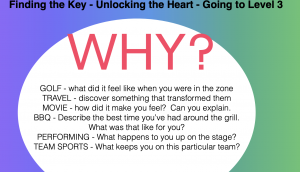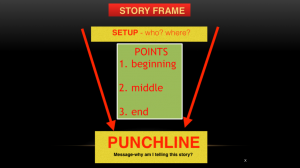Learn the Power of Improvisation
Learn the Power of Improvisation
I took an Improvisation class at Stanford University to learn how to better communicate with friends, family, and colleagues.
I learned a few things: a framework of communication, how to tell a story, and fully be in the moment
Overview:
- Take a framework of how to discuss things into every discussion.
- Positive Mindest: “Yes and..”
- Tell stories in Chunks
- Be aware of tone and body movements and be clear how it affects the audience
Recently, I took an improv and speaking class at Stanford Continuing Studies. And when I use the skills – which to be honest I don’t always and I should – all of my interactions are enhanced. Whether speaking to my family, colleagues, or strangers, my ability to think on my feet and connect with others has gotten much better. Why and How? Simply put, it closes the gap between your brain and mouth – giving you a framework for discussing anything. God knows how many times my mom told me to “Think before you speak!” But she didn’t tell me how to do it.
Μy class was taught by Lee Eisler – who made the Olympics as a long jump champion and sprinter in 1972. She teaches both public speaking and improvisation with her colleague Gary Grossman. These skills help in a variety of scenarios. Learn to be comfortable meeting new people, getting to know others and building common bonds with bosses (you may have nothing in common with), or just use it with friends and partners to keep the conversation moving. Here is how to do it:
First, learn the framework of how to create conversations. Why? It teaches you how to think on your feet. Oh, you mean you were supposed to naturally know how to do that. Yeah, right. For someone like me who is a slower thinker, this is very useful…
Layer 1: General information and background
- Where did they grow-up and where do they do their favorite activities.
- Hobbies, activities and families
- Job, career, studies, travel
Layer 2: Figure out the When and How.
- When did they change jobs? When did they move?
- How did it happen? How did they achieve a promotion or a certain achievement?
- Once this layer is opened then can move to layer 3 if they are receptive.
Layer 3: Get to know How the person thinks and feels. Why the person does something?
- Why someone did this (the reasons)
- How we feel about something (sensations)
- The why and how is where we can draw deeper connections to people and see if you are aligned.
When I played this game with my partner, he was a wine aficionado and I don’t like that. But when I get to the why’s i learned that this did two things for him: 1) gave him a bond with his wife and 2) let him travel to other places and often go into nature where they hiked. Voila! Even though I don’t like wine tasting, we found out the “WHY” and bonded over nature and hiking. I thought that previously and in many cases, I would have shut the conversation down with “Oh shoot, I don’t like wine tasting because my ex would make me go with her.” I was delighted to learn this small way of connecting with people.
Next, get into a mental state every time. What is that mental state? Positivity. concentration, and attentive listening.
The best way to get into positivity is by thinking and reciting “Yes and…”. This will do away with judgment and mental labeling. If you say something too off the wall, it’s ok to fail wonderfully and concede, “I don’t know, my brain isn’t working.”
Be in the moment and listen attentively. Don’t think about what you are going to say. Hear the person completely and then begin the thinking process. It isn’t a race and we don’t need to speak right after the other person.
Third, Learn how to Tell a Story Framework. Always have a punchline in mind beforehand! This helps to stay on message. So many people don’t. So think about your stories in chunks of 2-3 sentences. Most people start a story without even thinking of the punchline so before you get into a story, know what the ending will be. Then keep it brief. Give the setup/setting. Then a brief beginning, middle, and end. Hit them with the punchline and even better if it is a total surprise. What makes a good ending?
Last, be aware of tone and body movement. Believe in your body when you tell the story. Shift your tone up and down but that is really the speaker’s choice to do it or not. We REALLY disagree with the saying, “It’s not what you say it’s how you say it.” The short is, keep an upbeat tone and open body language. No folding or flapping arms, please.
If you want to know more, reach out to Lee Eisler bleeeisler@gmail.com and Gary Grossman ggrossman60@gmail.com or visit your local improv studio.

Here is how to find the why in improvisation.

Basic storytelling points – its simple but so often not done well

Lee Eisler
